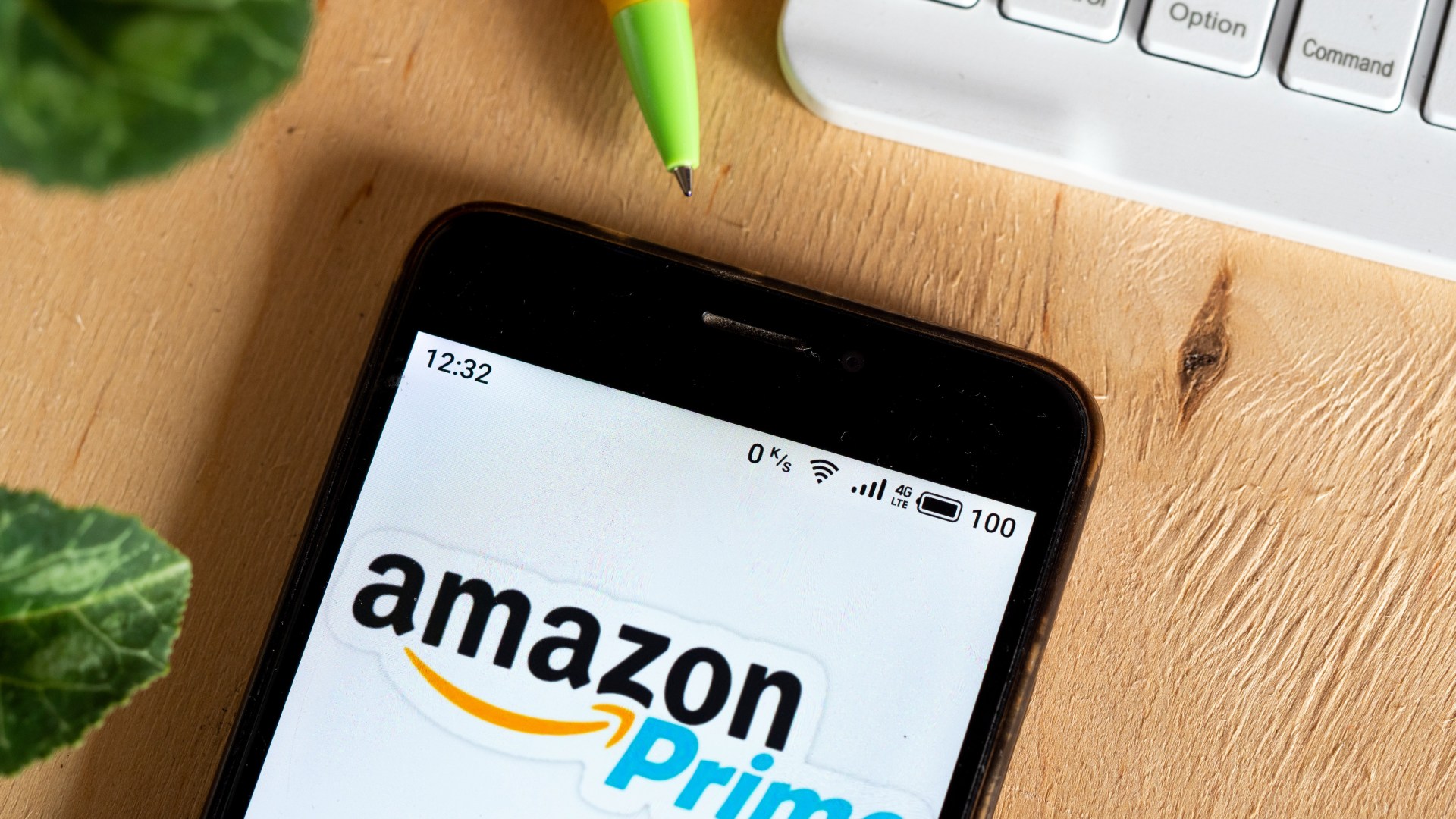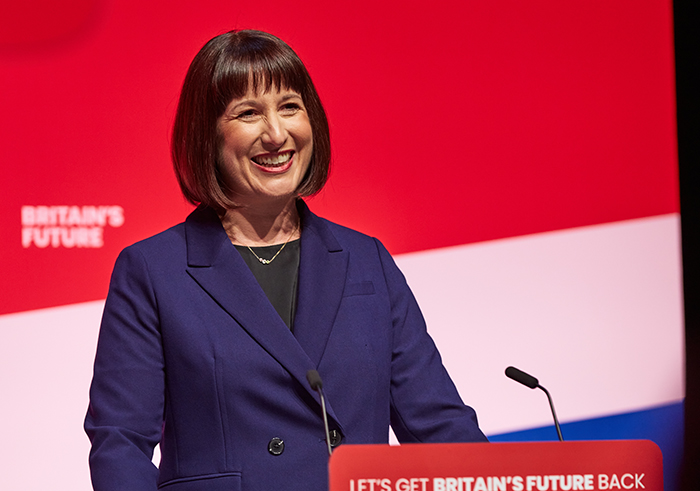Money
Handy tool every Amazon shopper should use that reveals if a Prime Day deal is REALLY worth buying

AMAZON Prime Day is a great opportunity to grab a bargain, but it’s important to make sure a deal is really going to save you money.
Fortunately, there are tools available to check you really are getting the best price on the market before you hit ‘buy now’.
Amazon Prime Day is a 48-hour sale event that will take place on October 8 and 9.
It’s exclusively available for Prime members, offering discounts on everything from the latest technology to sought after beauty items and top toys.
Bargain hunters will be looking to score big savings on thousands of items, but it’s important to make sure that the publicised discount is as good as it seems.
We all know how alluring sales can be, particularly with Christmas just around the corner, but luckily there are tools available to stop you losing your head.
Harry Rose, Editor of Which? magazine, said: “Amazon Prime Day may seem like the best time to snap up a good deal if you are a Prime member but don’t feel panicked into buying things you don’t need or haven’t budgeted for.
“When looking to buy something new, always do your research first by checking price comparison sites like PriceRunner and CamelCamelCamel, which not only show current prices at multiple retailers but also reveal a product’s pricing history.
“This allows you to work out whether the sale price genuinely represents good value.”
CamelCamelCamel is a shopper’s best friend when it comes to Amazon Prime Day.
The website allows shoppers to enter an item’s URL to reveal its price history, and see if it has previously been sold at a lower price.
Handily, you can also set up price alerts to let you know when it drops in price again.
Prices can change during the two day event so if there’s an item your desperate to get at the best price, setting up a CamelCamelCamel alert could ensure you don’t miss out on the best price.
Don’t forget to also check other retailers before purchasing using Google Shopping or Price Spy.
And remember, you’ll only be making a saving if you intended to buy the item in the first place and don’t forget hidden costs, like delivery charges.
Some items are particularly likely to be heavily discounted in the Prime Day sale, such as stock the online retailer wants to clear ahead of Christmas.
Which? editor Mr Rose said: “Some products follow quite predictable pricing cycles, for example, the previous year’s TVs typically drop in price when new models launch in spring, so check if you can pick up last year’s models for a bargain price.
“Most technology, including smartphones, TVs and tablets, are released on a one-year cycle, so you only need to wait 12 months before there’s a shiny new device to get excited about.
“Big tech companies will do their best to tempt you into buying their latest release, but the forgotten device celebrating its first birthday could still be more than adequate and it’s also far more likely to be on sale.”
Whatever is catching your eye this October remember to do your research and make sure you get the best price.
When is Prime Day 2024?
The next Prime Day event will be the Big Deal Days sale event in October.
The sale will kick off at midnight on October 8 and run to midnight on October 9.
The last Prime Day event for 2024 took place on July 16-17 and Prime members enjoyed thousands of discount across all categories.
If you don’t want to miss out on October’s event you will need to become a Prime member.
Signing up for a Prime membership is easy and comes with lots of perks including next-day delivery and access to Prime Video and Amazon Music.
Amazon Prime costs £8.99 a month, or £95 for an annual membership.
But if you are brand-new to Prime you can sign up for a 30-day free trial, giving you free access to the sale when it launches next month.
However, you will need to cancel your membership before the 30-day trial ends to avoid the ongoing £8.99 monthly fee.
What were the best Prime Day deals in July?
Some of the best Prime Day bargains offered in July were for Amazon branded products such as Fire tablets and TVs as well as Ring doorbells.
One of the hottest deals was the ‘seriously impressive’ 55-inch Fire TV slashed from £549.99 to £329.99.
Other highlights in the July Prime Day event included discounts on the Shark Cordless Stick Vacuum Cleaner, which was reduced from £279.99 to £159.99, and the Philips L’OR Barista Sublime Capsule Coffee Machine, which was slashed from £109.99 to £49.99.
How to bag a bargain
SUN Savers Editor Lana Clements explains how to find a cut-price item and bag a bargain…
Sign up to loyalty schemes of the brands that you regularly shop with.
Big names regularly offer discounts or special lower prices for members, among other perks.
Sales are when you can pick up a real steal.
Retailers usually have periodic promotions that tie into payday at the end of the month or Bank Holiday weekends, so keep a lookout and shop when these deals are on.
Sign up to mailing lists and you’ll also be first to know of special offers. It can be worth following retailers on social media too.
When buying online, always do a search for money off codes or vouchers that you can use vouchercodes.co.uk and myvouchercodes.co.uk are just two sites that round up promotions by retailer.
Scanner apps are useful to have on your phone. Trolley.co.uk app has a scanner that you can use to compare prices on branded items when out shopping.
Bargain hunters can also use B&M’s scanner in the app to find discounts in-store before staff have marked them out.
And always check if you can get cashback before paying which in effect means you’ll get some of your money back or a discount on the item.
Do you have a money problem that needs sorting? Get in touch by emailing money-sm@news.co.uk.
Plus, you can join our Sun Money Chats and Tips Facebook group to share your tips and stories
Money
Tens of thousands of struggling energy customers to have bill debt WIPED and get free air fryers – are you eligible?

TENS of thousands of struggling energy customers can have their bills wiped and get a host of energy-saving gadgets this winter.
EDF Energy, one of the country’s largest energy firms, will offer fresh support to those facing fuel poverty this winter.
The supplier will invest £29 million in a range of initiatives, including debt matching and write offs, as well as providing free energy-saving gadgets.
Debt matching allows struggling customers to get part of their balance wiped.
For instance, if a customer pays £100, EDF Energy will pay off £100, too, effectively wiping half the amount owed and getting them back on track sooner.
British Gas also offers a similar scheme for hard-up customers.
EDF could also write off debts completely on a case-by-case basis.
Other customers could be offered free energy-saving gadgets if they contact the supplier as well.
To get the support you’ll first be referred to one of EDF’s charity partners: Citizens Advice Plymouth, Income Max, and Charis Grants.
Last winter, EDF helped 65,000 customers with support, including debt advice, Income maximisation, energy efficiency advice, debt clearance and financial assistance payments.
Its Warm Winter shop also helped 1,000 customers with electric goods such as kettles, air fryers and slow cookers.
To be eligible, a customer must be fuel poor or at risk of fuel poverty and have known vulnerabilities in the household.
EDF says its team will identify eligible customers and refer them for extra support from Income Max and Plymouth Citizens Advice.
These partner firms will then recommend customers and support them with an application for debt relief.
EDF says that any decision is made based on many factors, including the value of debt, its age, and customers’ repayment behaviour.
Philippe Commaret, managing director of customers at EDF, said: “Whilst the Ofgem price cap has reduced in three of the last four quarters, an October rise of 10% will have a significant impact on those who are already struggling.
“We are doing all we can to reduce bills, however, to make a real long-term difference, we believe a social tariff is still needed.
“Only through meaningful Government and industry-wide intervention, paired with better data matching, such as a single cross-sector Priority Services Register, will affordability improve for those most in need.”
To find out more about the help, visit edfenergy.com/about/support-for-customers.
What energy bill help is available?
THERE’S a number of different ways to get help paying your energy bills if you’re struggling to get by.
If you fall into debt, you can always approach your supplier to see if they can put you on a repayment plan before putting you on a prepayment meter.
This involves paying off what you owe in instalments over a set period.
If your supplier offers you a repayment plan you don’t think you can afford, speak to them again to see if you can negotiate a better deal.
Several energy firms have grant schemes available to customers struggling to cover their bills.
But eligibility criteria varies depending on the supplier and the amount you can get depends on your financial circumstances.
For example, British Gas or Scottish Gas customers struggling to pay their energy bills can get grants worth up to £2,000.
British Gas also offers help via its British Gas Energy Trust and Individuals Family Fund.
You don’t need to be a British Gas customer to apply for the second fund.
EDF, E.ON, Octopus Energy and Scottish Power all offer grants to struggling customers too.
Thousands of vulnerable households are missing out on extra help and protections by not signing up to the Priority Services Register (PSR).
The service helps support vulnerable households, such as those who are elderly or ill, and some of the perks include being given advance warning of blackouts, free gas safety checks and extra support if you’re struggling.
Get in touch with your energy firm to see if you can apply.
What should I do if I fall into debt?
You should contact your supplier as early as possible to let them know if you’re struggling.
Energy debts are priority debts, which means there can be more severe consequences to not paying than with other types of debt.
Failing to engage with your supplier about your debt could also see them apply for a court warrant to forcibly install a prepayment meter in your home.
Once you’ve contacted your supplier about your debt problems, ask for an affordable repayment plan.
Your supplier should work with you to figure out a sensible amount you can pay towards your debts each month.
Your supplier may also allow you to apply for an energy grant.
These could be delivered as energy credits to help cover your debt, or your supplier might agree to wipe your outstanding balance.
Ask your supplier what’s on offer and how to apply.
How to get free debt help
THERE are several groups which can help you with your problem debts for free.
- Citizens Advice – 0800 144 8848 (England) / 0800 702 2020 (Wales)
- StepChange – 0800138 1111
- National Debtline – 0808 808 4000
- Debt Advice Foundation – 0800 043 4050
You can also find information about Debt Management Plans (DMP) and Individual Voluntary Agreements (IVA) by visiting MoneyHelper.org.uk or Gov.UK.
Speak to one of these organisations – don’t be tempted to use a claims management firm.
They say they can write off lots of your debt in return for a large upfront fee.
But there are other options where you don’t need to pay.
Money
Border to Coast launches £1.2bn UK fund

The vehicle will be seeded with a pool of 65 pension fund assets, with plans to more than double in size to over £3bn in the next five years.
The post Border to Coast launches £1.2bn UK fund appeared first on Property Week.
Money
Is time up for the self-employed adviser?

 If your business relies heavily on self-employed advisers, now might be a good time to start looking at alternative business models
If your business relies heavily on self-employed advisers, now might be a good time to start looking at alternative business models
The recent news of ex-rugby player Stuart Barnes, who lost an IR35 battle against HM Revenue & Customs (HMRC), leaving him with a £700,000 tax bill, made me think about the use of self-employed contracts in the adviser sector.
In response to the story, former financial planner Dave Robinson wrote on LinkedIn:
“Very interesting. I wonder how many self-employed financial adviser contracts would pass the test on this latest interpretation? And how many self-employed advisers are there? Surely, given the state of the public purse, it can’t be long before HMRC starts having a closer look.”
Self-employed advisers have an uphill struggle from the outset
As an employment lawyer working within financial services, the prevalence of self-employed advisers has always made me feel slightly uncomfortable.
It’s a model that is frequently used. Indeed, we regularly draft self-employed adviser agreements, advising on the employment status risks for employment and tax purposes, including IR35.
When looking at the test of employment status, self-employed advisers have an uphill struggle from the outset. There is normally a consultancy agreement in place which requires the adviser to provide services personally to a firm in return for remuneration.
In an industry built on relationships, it’s unlikely a client would accept any old person turning up to give them advice. It’s unlikely a firm would be happy with this arrangement either.
Control is also a problem. In a regulated industry where a firm’s own compliance with its regulatory obligations depends on its workforce complying with the Financial Conduct Authority’s requirements and its own polices and procedures, the “”what, when, where and how” boxes must be ticked.
As an employment lawyer working within financial services, the prevalence of self-employed advisers has always made me feel slightly uncomfortable
So, with mutuality of obligation, personal service and substitution and control out of the window – what next?
Well, it’s not all bad news. The self-employed adviser can normally carry out the work when they like and, because most are pay-away arrangements, there is no set amount of work required or fixed remuneration – you only get paid for work you do.
But despite these factors, it still feels like there could be a bit of a hill to climb.
There remains a question that could push the adviser over the self-employed line – is the self-employed adviser in business on their account?
In many situations, this is the case. Self-employed advisers who have their own book of business bring it to the firm with them and can take it when they leave.
Ownership of clients and a degree of financial risk taken by the self-employed adviser certainly helps with the employment status analysis.
It feels like only a matter of time until HMRC decides to shift its focus away from the world of sport and media to the financial services sector
However, matters aren’t always this straightforward and the firm may need to have some level of client ownership and protection to sufficiently protect its business.
With this in mind, a firm will need to carefully consider and balance the employment status risk against the risk to its business if it doesn’t have post-termination protections in place, such as restrictive covenants, which would protect its confidential information and client relationships if the self-employed adviser were to leave.
All that said, being “in business on your account” didn’t end up helping Barnes, with the Upper Tribunal drilling into other factors such as the right to provide a substitute, exclusivity and lack of financial risk.
It feels like only a matter of time until HMRC decides to shift its focus away from the world of sport and media to the financial services sector. If your business relies heavily on self-employed advisers, now might be a good time to start looking at alternative business models.
Claire Holland is a partner at Foot Anstey
Money
ASOS makes huge change to fees from today as shopper threaten to boycott

ASOS has made a major change to its return fees, sparking fury amongst shoppers.
The online retailer will start charging customers when they return items unless they spend a certain amount.
UK shoppers who frequently return orders will be charged £3.95 unless they keep up to £40 of their order.
The new rule, which has been introduced to crack down on serial returners, comes into effect today, October 8.
Talk of the rule change has upset ASOS shoppers, with some even threatening to boycott the online store.
Commenting on X, formally Twitter, one user wrote: “The problem for large returns is the fact half of your stock is ill-fitting and poor quality.
“You’re another brand now alienating your loyal customers.”
“Well ASOS if you actually made clothes that fit so I wouldn’t need to buy multiple sizes we wouldn’t have that problem, consider me no longer a customer,” posted another.
While another wrote; “Did you [ASOS] consider that returner fee isolates customers who don’t fit ideal body standards?
“As a curvy girl, I have to order several sizes and often make returns as your sizing is not consistent, now I’m going to be charged for it? Way to make me feel bad about my body.”
ASOS previously said that a “small number of shoppers” will be charged but has not elaborated on the exact number of shoppers affected.
Those hit by the change will need to keep £40 worth of goods to avoid the new charge.
Shoppers who already pay £9.95 a year for Asos Premier to get perks like free next-day delivery will not be exempt from the extra fee – but will have to keep a lower value of items.
For Premier customers affected, that will be £15.
Craig Smith, UK country manager at Scayle, an e-commerce platform, said the move could risk damaging customer loyalty.
He said: “Retailers like ASOS have tried to tackle the problem of returns by asking customers to foot the bill – but this is far from a silver bullet.
“Firstly, brands risk damaging customer loyalty by alienating customers who are reluctant to fork out a fee. “
YOUR RETURN RIGHTS EXPLAINED
THE SUN’S Head of Consumer, Tara Evans, explains your return rights:
Your right to return items depends on where you purchased them and why you want to return them.
If you bought an item online then you are covered by the Consumer Contracts Regulations, which means you can cancel an item 14 days from when you receive it.
You then have a further 14 days to return the item, once you’ve notified the retailer that you want to return it.
If an item is faulty – regardless of how you bought it – you are legally able to return it and get a full refund within 30 days of receiving it.
Most retailers have their own returns policies, offering an exchange, refund or credit.
Shops don’t have to have these policies by law, but if they do have one then they should stick to it.
It’s just the latest of many retailers to start charging for returns.
Here’s a full list of all the other retailers now charging customers to make returns.
Pretty Little Thing
PrettyLittleThing (PLT) started charging all customers for returns in June.
The fashion brand, owned by Boohoo, introduced a £1.99 fee on June 3.
The charge is deducted from a shopper’s full refund amount.
PrettyLittleThing fans who are members of its PLT Royalty programme can’t avoid the charge either.
PLT Royalty costs £9.99 a year and gives members free unlimited delivery on all items.
River Island
In February, River Island angered customers by introducing a £2 charge to return items ordered online.
The charge will be deducted from the total amount refunded after the customer has posted back the items.
River Island says items must be returned within 28 days of delivery and should be clean, unworn and with tags still attached.
Angry customers have railed against the change and even vowed to stop shopping there.
H&M
H&M brought in a £1.99 fee in September last year.
The huge Swedish-owned retailer updated its policy on its website.
Shoppers returning parcels bought online via courier are now charged, with the cost coming out of their refund.
Those who are H&M members, which is free to sign up for, still get to return their hauls for free, though.
On the H&M website, it says: “There is a £1.99 return fee per return parcel to store or online for non-members, which will be deducted from your refund.”
However, it says that shoppers won’t be charged the fee if the item they’re bringing back is faulty or incorrect.
Boohoo
Boohoo also introduced a £1.99 charge for returns after previously offering them for free.
The large online retailer updated its policy on its website.
It states: “Please note a returns charge of £1.99 per parcel will be deducted from your refund amount.
“Returns are FREE for premier customers.”
A Boohoo spokesperson at the time said the change was due to the increase in the cost of shipping.
They added the decision was made so the company can “continue to offer great prices and products and do this in a more sustainable way”.
Boohoo’s policy also applies to shoppers who use gift cards, store credit, or vouchers.
Boohoo’s website states: “If you paid for your order with a gift card, store credit or a voucher, a replacement to the value of the refund will be issued minus the cost of £1.99 for returning the item to us.”
Zara
In May 2022, high-street retailer Zara started charging customers £1.95 for returns.
Shoppers are being charged £1.95 to send back items, with the fee deducted from their refund.
However, customers can still return items purchased online to a Zara store free of charge, as long as they have the matching e-receipt and it’s within 30 days from the date of shipment.
A spokesperson for Zara said previously: “Customers can return online purchases at any Zara store in the UK free of charge, which is what most customers choose to do.
“The £1.95 fee only applies to the return of products at third-party drop-off points.”
New Look
Back in 2023, New Look announced it was trialling a £1.99 return fee for online orders to offset any possible price rises.
The fee applies to postal returns only, with in-store returns for online orders continuing to be free.
In a statement at the time, a New Look spokesperson said: “New Look has taken the decision to trial a £1.99 fee for postal returns.
“This is in line with the wider industry and reflects increased costs related to delivery and collection. Customers are still able to return their online orders to our stores free of charge.”
Debenhams
In December 2023, Debenhams left shoppers feeling “cheated” after introducing a charge for returning online goods.
The new £1.99 fee came amid fears shoppers have been abusing free returns by ordering items, wearing them briefly and then sending them back.
The Debenhams website now says shoppers must pay £1.99 for every parcel returned.
Angry shoppers moaned on social media, with one saying: “Since when did Debenhams charge for returns?
“Should’ve been clear before placing an order #debenhams.”
Customers with Unlimited membership – which costs £9.50 a year -can make unlimited returns and deliveries with no additional charges.
Next
Next introduced the change at the start of 2023 and customers now have to fork out £2.50 per item returned.
Customers can save money on deliveries and returns by opting for an annual subscription, which costs £22.50 a year.
You can return any items to one of the retailer’s more than 450 stores without charge.
Previously, you could also get courier returns included for free as well, but the retailer has now ditched them.
It comes after a poll revealed that cash-strapped consumers are taking their money elsewhere in response to retailers slashing their free returns policies.
And this iconic high street retailer has angered customers by introducing a £2 charge to return items ordered online.
Money
Unite property values rise as rents leap 8.2%

TRY 6 ISSUES FOR JUST £6
Try 6 issues of Property Week for £6 to finish this article.
Sign up now for the following benefits:
- Unlimited access to Property Week and newsletters
- Breaking news, comment and analysis from industry experts as it happens

Don’t want full access? REGISTER NOW for limited access and to subscribe to our newsletters.
Money
Chancellor Reeves ‘wrapping herself in a straight jacket’ ahead of Budget


New chancellor Rachel Reeves is “wrapping herself in a straight jacket” as she tries to balance reassuring the public with reassuring the market ahead of the 30 October Budget, political journalist and broadcaster Nick Watt has warned.
During his keynote speech at Money Marketing Interactive in London today (8 October), Watt said Reeves is faced with a conundrum: How does she rebuild the public realm while maintaining her reputation for fiscal prudence as she tackles the £22bn black hole she identified at the end of July?
He said that, on the one hand, the chancellor is reassuring voters by ruling out any increases in the three big revenue raises of income tax, VAT and National Insurance.
At the same time, she is reassuring the market by showing what she describes as “ironclad fiscal discipline”.
“Firstly, she aims to ensure no borrowing for day-to-day spending in the long run. Secondly, she plans to reduce debt as a share of GDP between the fourth and fifth years of the forecast,” Watt added.
“This commitment restricts her ability to borrow for investment, and if she sticks to this approach, she will need to cut spending in unprotected areas to maintain spending in protected areas like the NHS.”
He said Reeves is “clear in her desire” to rebuild the public sector “without reckless spending”.
“This raises the question of what she will do in the Budget with such tight restrictions. It appears there are two major tax proposals the government is focusing on.
“The first is clamping down on non-domiciled individuals, and the second involves removing the business rate exemption for private schools.
“However, there are now doubts about how quickly these will be implemented.”
Watt said that if there are uncertainties about these two proposals, which are expected to raise several billion pounds, this “raises the question” of what else the chancellor might consider to generate revenue.
“Options could include raising the rate of capital gains tax, altering pension rules or increasing inheritance tax,” he said.
“A key issue drawing attention is whether she will find a way to ease the fiscal rules.”
Watt suggested one option for doing this could involve counting Bank of England debt differently by excluding losses from asset sales and policy banks.
Another suggestion, from the IPPR – a think tank favoured by Number 10, is to target public sector net worth as the debt measure.
“This approach could unlock £57bn of investment,” Watt added. “That approach means that you take account the value of public assets, like roads, schools and hospitals.”
But, he warned, this is “difficult to define”.
-

 Womens Workouts2 weeks ago
Womens Workouts2 weeks ago3 Day Full Body Women’s Dumbbell Only Workout
-

 Science & Environment3 weeks ago
Science & Environment3 weeks agoHow to unsnarl a tangle of threads, according to physics
-

 Science & Environment3 weeks ago
Science & Environment3 weeks agoHyperelastic gel is one of the stretchiest materials known to science
-

 Technology3 weeks ago
Technology3 weeks agoWould-be reality TV contestants ‘not looking real’
-

 Science & Environment3 weeks ago
Science & Environment3 weeks ago‘Running of the bulls’ festival crowds move like charged particles
-

 Science & Environment3 weeks ago
Science & Environment3 weeks agoMaxwell’s demon charges quantum batteries inside of a quantum computer
-

 News2 weeks ago
News2 weeks agoOur millionaire neighbour blocks us from using public footpath & screams at us in street.. it’s like living in a WARZONE – WordupNews
-
News3 weeks ago
the pick of new debut fiction
-

 Science & Environment3 weeks ago
Science & Environment3 weeks agoHow to wrap your mind around the real multiverse
-

 Science & Environment3 weeks ago
Science & Environment3 weeks agoQuantum ‘supersolid’ matter stirred using magnets
-

 Science & Environment3 weeks ago
Science & Environment3 weeks agoSunlight-trapping device can generate temperatures over 1000°C
-

 Science & Environment3 weeks ago
Science & Environment3 weeks agoITER: Is the world’s biggest fusion experiment dead after new delay to 2035?
-

 Science & Environment3 weeks ago
Science & Environment3 weeks agoLiquid crystals could improve quantum communication devices
-

 Science & Environment3 weeks ago
Science & Environment3 weeks agoQuantum forces used to automatically assemble tiny device
-

 Science & Environment3 weeks ago
Science & Environment3 weeks agoPhysicists are grappling with their own reproducibility crisis
-

 Science & Environment3 weeks ago
Science & Environment3 weeks agoWhy this is a golden age for life to thrive across the universe
-

 News3 weeks ago
News3 weeks agoYou’re a Hypocrite, And So Am I
-

 Sport3 weeks ago
Sport3 weeks agoJoshua vs Dubois: Chris Eubank Jr says ‘AJ’ could beat Tyson Fury and any other heavyweight in the world
-

 Science & Environment3 weeks ago
Science & Environment3 weeks agoTime travel sci-fi novel is a rip-roaringly good thought experiment
-

 Science & Environment3 weeks ago
Science & Environment3 weeks agoLaser helps turn an electron into a coil of mass and charge
-

 Science & Environment3 weeks ago
Science & Environment3 weeks agoCaroline Ellison aims to duck prison sentence for role in FTX collapse
-

 Science & Environment3 weeks ago
Science & Environment3 weeks agoNuclear fusion experiment overcomes two key operating hurdles
-
Business1 week ago
Eurosceptic Andrej Babiš eyes return to power in Czech Republic
-

 Science & Environment3 weeks ago
Science & Environment3 weeks agoNerve fibres in the brain could generate quantum entanglement
-

 Technology1 week ago
Technology1 week ago‘From a toaster to a server’: UK startup promises 5x ‘speed up without changing a line of code’ as it plans to take on Nvidia, AMD in the generative AI battlefield
-

 Football1 week ago
Football1 week agoFootball Focus: Martin Keown on Liverpool’s Alisson Becker
-

 Science & Environment3 weeks ago
Science & Environment3 weeks agoRethinking space and time could let us do away with dark matter
-

 News3 weeks ago
News3 weeks ago▶️ Hamas in the West Bank: Rising Support and Deadly Attacks You Might Not Know About
-

 Science & Environment2 weeks ago
Science & Environment2 weeks agoX-rays reveal half-billion-year-old insect ancestor
-

 MMA1 week ago
MMA1 week agoConor McGregor challenges ‘woeful’ Belal Muhammad, tells Ilia Topuria it’s ‘on sight’
-
Business1 week ago
Should London’s tax exiles head for Spain, Italy . . . or Wales?
-

 News3 weeks ago
News3 weeks ago▶️ Media Bias: How They Spin Attack on Hezbollah and Ignore the Reality
-

 Science & Environment3 weeks ago
Science & Environment3 weeks agoA slight curve helps rocks make the biggest splash
-

 News3 weeks ago
News3 weeks agoNew investigation ordered into ‘doorstep murder’ of Alistair Wilson
-

 News3 weeks ago
News3 weeks agoIsrael strikes Lebanese targets as Hizbollah chief warns of ‘red lines’ crossed
-

 Science & Environment3 weeks ago
Science & Environment3 weeks agoFuture of fusion: How the UK’s JET reactor paved the way for ITER
-

 Science & Environment3 weeks ago
Science & Environment3 weeks agoA new kind of experiment at the Large Hadron Collider could unravel quantum reality
-

 Science & Environment3 weeks ago
Science & Environment3 weeks agoUK spurns European invitation to join ITER nuclear fusion project
-

 CryptoCurrency3 weeks ago
CryptoCurrency3 weeks agoCardano founder to meet Argentina president Javier Milei
-

 News2 weeks ago
News2 weeks agoWhy Is Everyone Excited About These Smart Insoles?
-

 Science & Environment2 weeks ago
Science & Environment2 weeks agoMeet the world's first female male model | 7.30
-

 Technology2 weeks ago
Technology2 weeks agoGet ready for Meta Connect
-

 Health & fitness1 week ago
Health & fitness1 week agoThe 7 lifestyle habits you can stop now for a slimmer face by next week
-

 Science & Environment3 weeks ago
Science & Environment3 weeks agoWhy we need to invoke philosophy to judge bizarre concepts in science
-

 CryptoCurrency3 weeks ago
CryptoCurrency3 weeks agoLow users, sex predators kill Korean metaverses, 3AC sues Terra: Asia Express
-

 Womens Workouts2 weeks ago
Womens Workouts2 weeks agoBest Exercises if You Want to Build a Great Physique
-

 Womens Workouts2 weeks ago
Womens Workouts2 weeks agoEverything a Beginner Needs to Know About Squatting
-

 News2 weeks ago
News2 weeks agoFour dead & 18 injured in horror mass shooting with victims ‘caught in crossfire’ as cops hunt multiple gunmen
-

 Technology2 weeks ago
Technology2 weeks agoRobo-tuna reveals how foldable fins help the speedy fish manoeuvre
-

 Technology1 week ago
Technology1 week agoQuantum computers may work better when they ignore causality
-

 Sport1 week ago
Sport1 week agoWatch UFC star deliver ‘one of the most brutal knockouts ever’ that left opponent laid spark out on the canvas
-

 CryptoCurrency3 weeks ago
CryptoCurrency3 weeks agoEthereum is a 'contrarian bet' into 2025, says Bitwise exec
-

 Health & fitness3 weeks ago
Health & fitness3 weeks agoThe secret to a six pack – and how to keep your washboard abs in 2022
-
Business3 weeks ago
JPMorgan in talks to take over Apple credit card from Goldman Sachs
-

 Science & Environment3 weeks ago
Science & Environment3 weeks agoQuantum time travel: The experiment to ‘send a particle into the past’
-

 Science & Environment3 weeks ago
Science & Environment3 weeks agoBeing in two places at once could make a quantum battery charge faster
-

 Science & Environment3 weeks ago
Science & Environment3 weeks agoA tale of two mysteries: ghostly neutrinos and the proton decay puzzle
-

 CryptoCurrency3 weeks ago
CryptoCurrency3 weeks agoBitcoin miners steamrolled after electricity thefts, exchange ‘closure’ scam: Asia Express
-

 CryptoCurrency3 weeks ago
CryptoCurrency3 weeks agoDorsey’s ‘marketplace of algorithms’ could fix social media… so why hasn’t it?
-

 CryptoCurrency3 weeks ago
CryptoCurrency3 weeks agoDZ Bank partners with Boerse Stuttgart for crypto trading
-

 CryptoCurrency3 weeks ago
CryptoCurrency3 weeks agoBitcoin bulls target $64K BTC price hurdle as US stocks eye new record
-

 CryptoCurrency3 weeks ago
CryptoCurrency3 weeks agoBlockdaemon mulls 2026 IPO: Report
-
News3 weeks ago
The Project Censored Newsletter – May 2024
-
Politics3 weeks ago
UK consumer confidence falls sharply amid fears of ‘painful’ budget | Economics
-

 TV2 weeks ago
TV2 weeks agoCNN TÜRK – 🔴 Canlı Yayın ᴴᴰ – Canlı TV izle
-

 Science & Environment2 weeks ago
Science & Environment2 weeks agoCNN TÜRK – 🔴 Canlı Yayın ᴴᴰ – Canlı TV izle
-

 Womens Workouts2 weeks ago
Womens Workouts2 weeks ago3 Day Full Body Toning Workout for Women
-

 Servers computers2 weeks ago
Servers computers2 weeks agoWhat are the benefits of Blade servers compared to rack servers?
-

 News2 weeks ago
News2 weeks agoUS Newspapers Diluting Democratic Discourse with Political Bias
-

 Technology1 week ago
Technology1 week agoThe best robot vacuum cleaners of 2024
-

 Politics3 weeks ago
Politics3 weeks agoTrump says he will meet with Indian Prime Minister Narendra Modi next week
-

 Sport3 weeks ago
Sport3 weeks agoUFC Edmonton fight card revealed, including Brandon Moreno vs. Amir Albazi headliner
-

 Science & Environment3 weeks ago
Science & Environment3 weeks agoHow one theory ties together everything we know about the universe
-

 News3 weeks ago
News3 weeks agoBrian Tyree Henry on voicing young Megatron, his love for villain roles
-

 Technology3 weeks ago
Technology3 weeks agoThe ‘superfood’ taking over fields in northern India
-

 Science & Environment3 weeks ago
Science & Environment3 weeks agoTiny magnet could help measure gravity on the quantum scale
-

 Science & Environment3 weeks ago
Science & Environment3 weeks agoHow do you recycle a nuclear fusion reactor? We’re about to find out
-

 CryptoCurrency3 weeks ago
CryptoCurrency3 weeks agoDecentraland X account hacked, phishing scam targets MANA airdrop
-

 CryptoCurrency3 weeks ago
CryptoCurrency3 weeks agoRedStone integrates first oracle price feeds on TON blockchain
-

 CryptoCurrency3 weeks ago
CryptoCurrency3 weeks ago‘No matter how bad it gets, there’s a lot going on with NFTs’: 24 Hours of Art, NFT Creator
-
Business3 weeks ago
Thames Water seeks extension on debt terms to avoid renationalisation
-
Business3 weeks ago
How Labour donor’s largesse tarnished government’s squeaky clean image
-
Politics3 weeks ago
‘Appalling’ rows over Sue Gray must stop, senior ministers say | Sue Gray
-

 News3 weeks ago
News3 weeks agoBrian Tyree Henry on voicing young Megatron, his love for villain roles
-

 CryptoCurrency3 weeks ago
CryptoCurrency3 weeks agoCoinbase’s cbBTC surges to third-largest wrapped BTC token in just one week
-

 MMA2 weeks ago
MMA2 weeks agoRankings Show: Is Umar Nurmagomedov a lock to become UFC champion?
-

 Travel2 weeks ago
Travel2 weeks agoDelta signs codeshare agreement with SAS
-

 Politics2 weeks ago
Politics2 weeks agoHope, finally? Keir Starmer’s first conference in power – podcast | News
-
Business1 week ago
Ukraine faces its darkest hour
-

 News3 weeks ago
News3 weeks agoChurch same-sex split affecting bishop appointments
-

 Technology3 weeks ago
Technology3 weeks agoiPhone 15 Pro Max Camera Review: Depth and Reach
-

 Health & fitness3 weeks ago
Health & fitness3 weeks agoThe maps that could hold the secret to curing cancer
-

 CryptoCurrency3 weeks ago
CryptoCurrency3 weeks agoCrypto scammers orchestrate massive hack on X but barely made $8K
-

 CryptoCurrency3 weeks ago
CryptoCurrency3 weeks agoSEC asks court for four months to produce documents for Coinbase
-

 CryptoCurrency3 weeks ago
CryptoCurrency3 weeks ago‘Silly’ to shade Ethereum, the ‘Microsoft of blockchains’ — Bitwise exec
-

 Womens Workouts3 weeks ago
Womens Workouts3 weeks agoHow Heat Affects Your Body During Exercise
-

 Womens Workouts3 weeks ago
Womens Workouts3 weeks agoKeep Your Goals on Track This Season
-

 Science & Environment3 weeks ago
Science & Environment3 weeks agoSingle atoms captured morphing into quantum waves in startling image
-

 News3 weeks ago
News3 weeks agoHow FedEx CEO Raj Subramaniam Is Adapting to a Post-Pandemic Economy
-

 CryptoCurrency3 weeks ago
CryptoCurrency3 weeks agoTelegram bot Banana Gun’s users drained of over $1.9M





You must be logged in to post a comment Login